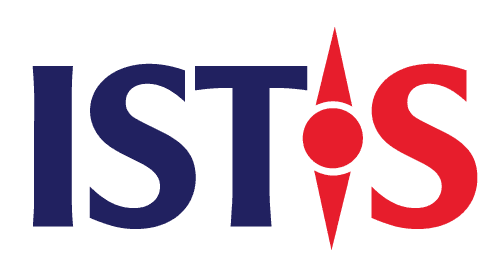The Invisible Architects of Innovation
In 2015, a young agritech startup in the Mekong Delta struggled to bring its AI-powered irrigation system to market. The technology worked. The market demand was there. But something was missing — access to partners, trust from local farmers, and a bridge to policymakers. What turned things around wasn’t a single investor or a lucky break. It was a network: a mentor from a university incubator, a local NGO that vouched for them, and a regional accelerator that opened doors to funding. This invisible infrastructure — made of people, relationships, and shared intent — is what we now recognize as an innovation ecosystem. And the ones who make it all happen? Ecosystem builders.
While startup founders, venture capitalists, and tech unicorns often dominate headlines, the true enablers of inclusive, sustainable growth work mostly in the background. Ecosystem builders are connectors, translators, and trust brokers. They map out who’s missing from the table, then find ways to bring them in. They don’t chase exits; they invest in relationships. Whether it’s a community manager at a coworking space in Da Nang, a policy advocate pushing for SME tax reform in Hanoi, or a data analyst mapping green supply chains in HCMC — these people shape the environment in which innovation can thrive.
In Vietnam and across Southeast Asia, this role has become increasingly crucial. As the region pursues ambitious digital transformation goals and green growth targets, the question isn’t just who will lead, but how we build the systems that support leaders at all levels. It’s time we give ecosystem builders the attention — and resources — they deserve.
At first glance, the term “ecosystem builder” might sound like just another label in the world of innovation jargon. But in practice, it describes a group of people doing essential, often overlooked work. These are the people who stitch together fragmented sectors, align competing interests, and create environments where innovation can take root — not just for one company, but for entire communities or industries.
In Vietnam, ecosystem builders wear many hats. Some are startup mentors who help young founders avoid early mistakes. Others work within government agencies, pushing for regulatory shifts to unlock market access for emerging sectors like fintech, clean energy, or digital agriculture. At the grassroots level, local NGOs and community leaders act as translators between global development agendas and local realities. Even university lecturers who open labs to early-stage entrepreneurs — or co-design training with industry — are playing a builder’s role.
What sets ecosystem builders apart is not just what they do, but how they do it. They prioritize trust over transactions. They have a deep sense of place-based knowledge — understanding not just market trends, but the informal networks, cultural dynamics, and bottlenecks unique to each locality. They ask: Who’s not in the room? What’s stopping them? What bridge can we build?
Importantly, ecosystem builders are not necessarily in positions of formal power. Many work in-between — across sectors, between institutions, or on the margins of big programs. Yet their impact is exponential. One introduction made, one policy nuance explained, or one partnership brokered can unlock an entire chain of innovation. They are the hidden infrastructure that makes visible growth possible.
Building Blocks in Action
Vietnam’s innovation landscape didn’t emerge overnight. It has been shaped by years of quiet groundwork — often led not by unicorn founders, but by ecosystem builders working across cities, sectors, and silos. A few standout examples show how this work plays out on the ground.
In Da Nang, the DNES (Da Nang Business Incubator) is more than just a co-working space. Launched with support from the city government, DNES pioneered a model where public-sector backing, private-sector mentoring, and international cooperation come together. It has helped local startups access early-stage support, provided soft landing zones for foreign tech partners, and cultivated trust between policymakers and founders — all hallmarks of ecosystem building.
Further north, the TECHFEST Vietnam initiative has become the country’s flagship innovation event — but its true value lies beyond the stage. Each TECHFEST isn’t just a showcase; it’s a mapping exercise of who’s building what, where the gaps are, and which communities are still disconnected. Ecosystem builders behind TECHFEST work year-round to coordinate ministries, universities, corporates, and local talent — creating a rare space where cross-sector collaboration becomes tangible.
Meanwhile, platforms like BambuUP are changing how ecosystem mapping is done. As an “open innovation” platform, BambuUP connects startups with corporations, governments, and researchers — not just as service providers, but as co-creators. Its curated ecosystem map gives visibility to overlooked players and helps decision-makers identify clusters of innovation across the country.
These examples prove that Vietnam’s innovation success is not the result of isolated brilliance. It’s the product of collective architecture — designed, tested, and adapted by those who build not just products, but the platforms that allow others to build.
Ecosystem Builder Redefining Leadership
What makes ecosystem builders remarkable is not just their impact, but the way they lead. Across Vietnam, this new kind of leadership is quietly reshaping how innovation happens: one relationship, one partnership, one breakthrough at a time.
Rather than relying on authority, ecosystem builders lead through trust and consistency. They are the people who show up — again and again — to connect founders with the right advisor, convince a policymaker to pilot something new, or help a corporate partner see the value in an unlikely collaboration. Their strength lies in their deep listening, their long memory of what has worked and what hasn’t, and their ability to move fluidly between stakeholders who don’t always speak the same language — be it technical, institutional, or cultural.
Even as they face structural constraints, ecosystem builders in Vietnam are finding creative ways to sustain their work. Some are forming cross-city alliances — linking incubators in Hanoi, Da Nang, and Ho Chi Minh City to share knowledge and amplify reach. Others are blending models: combining revenue-generating services with mission-driven programming, or embedding innovation programs within universities and industry hubs for long-term resilience.
What’s exciting is the shift in mindset. More funders and public agencies now recognize that building ecosystems is not a side activity — it’s a strategic investment. The rise of national platforms, regional cooperation, and growing interest in ESG and impact measurement all point to an emerging support system for those who build the system.
Ecosystem builders aren’t waiting for perfect conditions. They’re shaping them. With the right recognition and support, they’ll go even further — not just enabling innovation, but redefining how it grows, who it serves, and where it begins.
Vietnam’s Next Advantage
Vietnam has no shortage of talent, ambition, or breakthrough ideas. What will determine its innovation future is not only how fast its startups grow or how many unicorns it creates — but how well it supports the people who make growth possible for others. In other words: its ecosystem builder.
As the country moves toward deeper digital transformation, green growth, and regional leadership in tech and innovation, it faces a critical opportunity. Instead of treating ecosystem building as a background task, Vietnam can make it a strategic advantage. Just as countries invest in infrastructure to move goods, Vietnam can invest in ecosystem infrastructure — people, networks, platforms — to move ideas, trust, and collaboration.
This doesn’t require building from scratch. The foundation already exists: city-led incubators, cross-sector partnerships, university programs, community hubs, innovation platforms, and national showcases. The next step is connecting and strengthening the connectors. That means flexible funding for long-term programs, support for community leaders and mentors, data tools to map gaps and opportunities, and shared frameworks to align public and private action.
Crucially, this is not just about economic growth. Ecosystem builders ensure that growth is inclusive, local, and resilient. They help rural founders access capital, guide socially driven startups through early pivots, and bring sustainability into mainstream conversations. In doing so, they widen the circle of who gets to participate in innovation — and who benefits from it.
In a world where speed often eclipses substance, ecosystem builders remind us that the real power lies in connection. Vietnam’s innovation journey is only beginning — and those who weave its networks will shape where it goes next.







